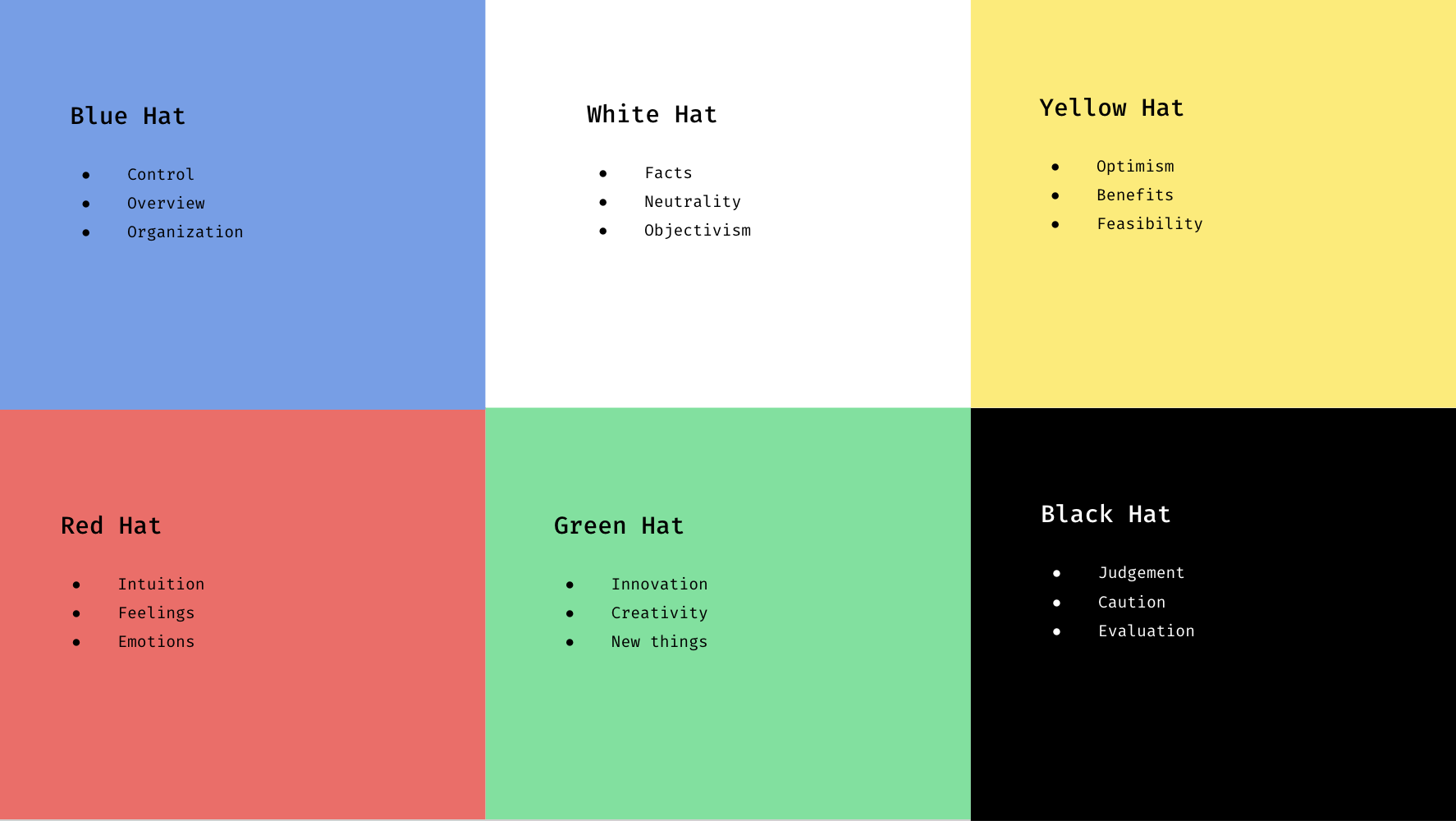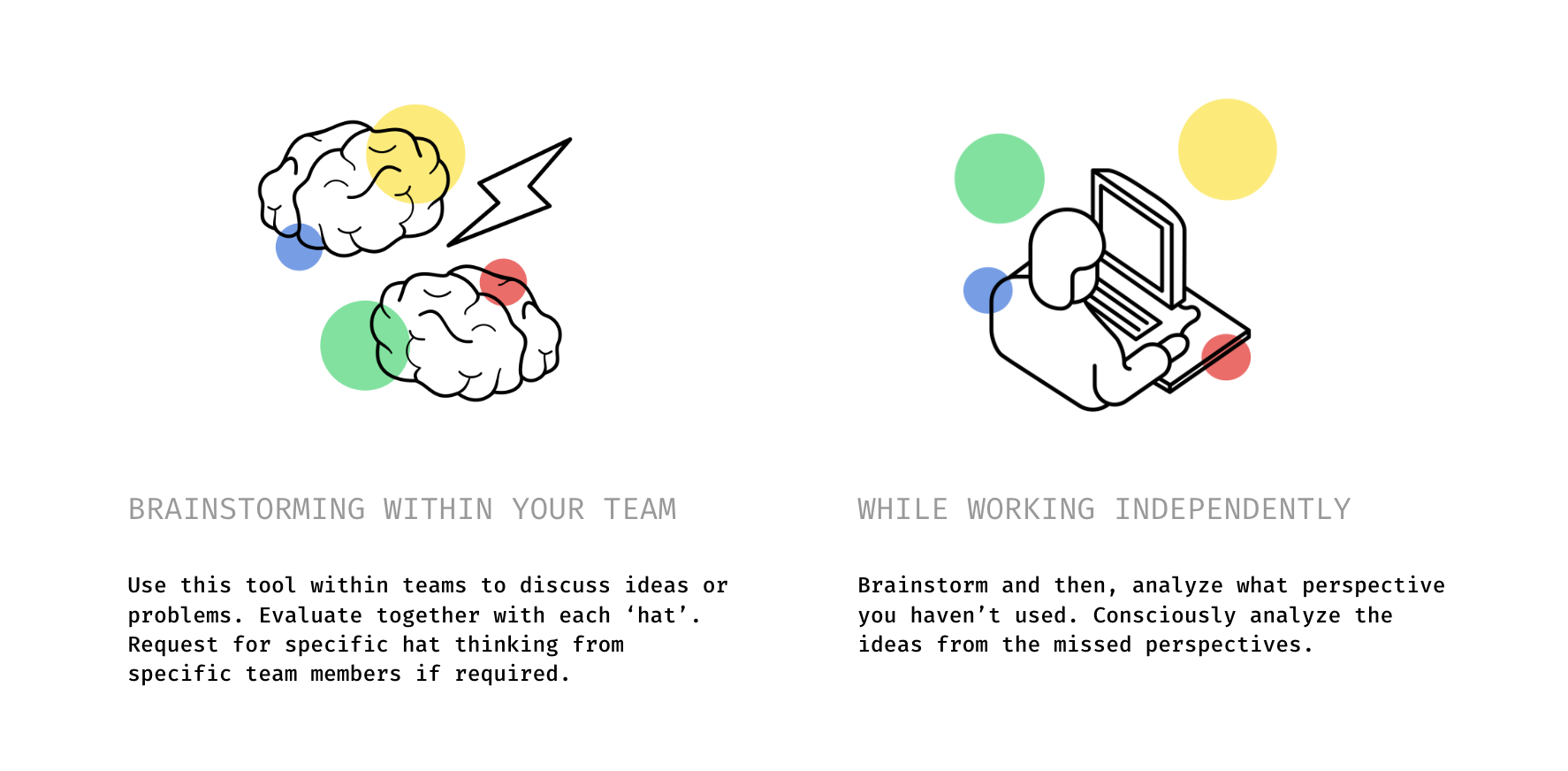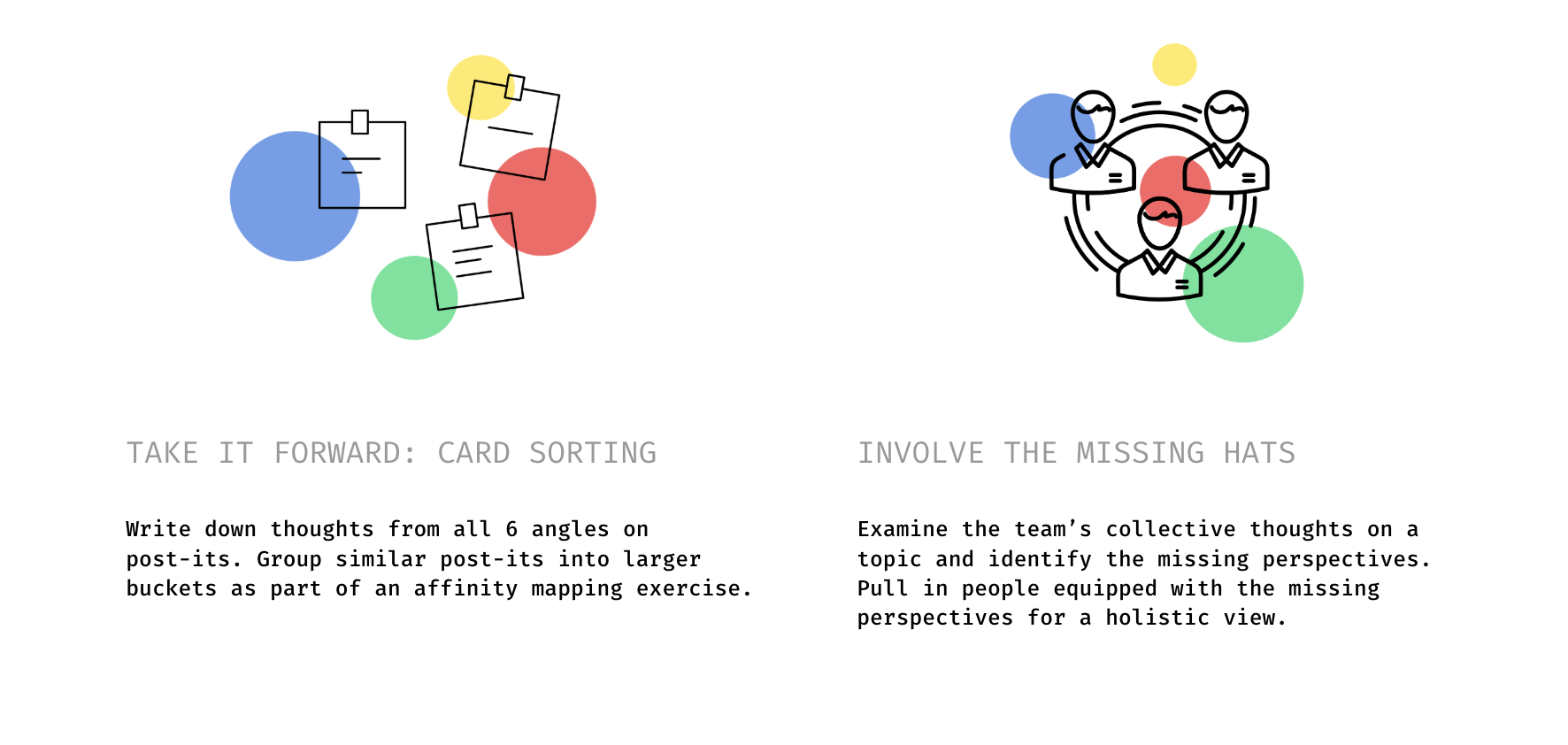In this fast-paced world, the workplace is becoming increasingly collaborative. More often than not, while working in a team addressing all perspectives becomes crucial for your team to work as a piece of well-oiled machinery. As designers, we tend to keep exploring tools that improve our processes, and, while doing so, we came across Six Thinking Hats. A Google search describes this tool ‘for creativity within decision making,’ and it may get overlooked by non-creatives.
However, after further understanding, we felt it is beneficial for any person who is part of a team and wants to have a constructive discussion. As a result, conducting an open-to-all session on this here at Synerzip was a natural progression. In this post, we show how the Six Thinking Hats tool can aid collaborative thinking. We also show how we hosted this workshop and its apparent outcomes.

The session
The group had the right mix of designers, engineers, and product managers. To consciously avoid design jargon, we got down to the basics. We started the session by asking participants to spend a minute and jot down their first thoughts on the subject of ‘planning a year-end vacation’.
This exercise demonstrates how we lean towards specific ways of thinking. Attributes such as our environment, education, and role at work largely determine which perspectives we tend to use over others. While each team member can put forth their unique views, it may cause the overall thinking to become unidirectional. This means:

Enter Six Thinking Hats
Invented by Edward De Bono, a Maltese physician, Six Thinking Hats introduces the concept of “Hats” as a metaphor for different ways of thinking. Participants don one hat at a time, together as a team, and analyze a subject from these six angles:

With this, we introduced parallel thinking in teams by dividing participants into groups and provided them with a problem statement. In this timed and guided activity, we added one hat at a time, explained how to use it. Participants would then have to pen their thoughts on sticky notes before moving to the next Hat.
You can read more about how the activity should be conducted here.

As it is not easy to consciously think only from a single perspective (for example, think of ideas and not immediately judge them), participants can be hesitant at first. In such situations, it is essential to:
- Treat all perspectives with neutrality
- Remember that no thought is right or wrong
Using this tool at work
Our main intention behind this exercise was to facilitate efficient collective thinking in any team through the means of this new tool. To encourage this, we guided participants on how to use this tool in day-to-day situations such as when they are working solo, in a fully-equipped team, or if they need perspectives different than theirs.


We also introduced different ways to order the hat colors, depending on the goal of the team’s discussion. These ways opened up possibilities for the participants to use this tool not just in their projects, but also for other purposes such as a performance review with a team member.

The response to this activity was mostly positive, and participants could see value in trying this in their projects and team meetings. This session also gave rise to interesting questions posed by participants, which we tried our best to answer.
Six Thinking Hats is an old tool. How is it still relevant in today’s world?
It is natural to perceive the tool being analogous in this fast-changing digital world. However, humans have always had to coordinate in a group with different perspectives even centuries ago (as Yuval Noah Harari eloquently explains in his book, Sapiens), and they still do today. This tool primarily works on having productive and goal-oriented discussions making it even more relevant than ever.
What if a team member refuses to agree to a point?
Conflicts such as a difference of opinion generally arise from interpersonal dynamics at the workplace. The beauty of this tool is that it detaches a fact from the person stating it emphasizing its neutrality. Using this tool in the right way will ensure that the result is not to ‘agree to someone’s point’ but to ‘collaboratively agree’ to a decision. That said, the Blue Hat decides on a course of action in case of such a conflict.
What if team members have pessimistic tendencies and think only from a negative perspective?
Different ways of ordering the hats come into play here — for example, the ‘Quick Feedback’ method (see above image). After planning the session, start with the devil’s advocate thinking (Black Hat). Once the team has exhausted all negatives, it is time to don the Green Hat and think of alternative solutions.
We concluded by identifying the best idea for our problem statement, but see that it still has some problems. What do we do now?
Even though there are some suggested ways of ordering the hat colors, the tool is flexible enough to allow your preferred method of using the hats. Any Hat can make a reappearance based on the context. In this case, the team can don the Black Hat to understand the drawbacks of the identified solution and then use the Green Hat again to come up with alternatives.
We concluded the session by sharing success stories of multinationals such as IBM and ABN Amro, who saw improved decision making and ROI as a result of using Six Thinking Hats. These social proof points helped reassure participants who are in roles that rely heavily on data and numbers before making decisions.
Takeaways
Every organization has its DNA and processes. Conducting this session could also be a way to test the feasibility of introducing such a tool and if it fits in with pre-existing processes and the organization’s readiness to adopt it.
Besides, ongoing support and guidance help teams within the organization adapt the tool in their process. We provided teams with a small guide/toolkit that people across the organization can have as a ready-reckoner to refer to when needed. The flexibility and effectiveness of Six Thinking Hats make it a promising tool worth trying within any team, aiming to have productive, goal-oriented discussions.
References
- “Six Thinking Hats Case Studies.” Genesis Events India Case Studies, Genesis Events India, genesiseventsindia.in/STH/case_studies.pdf.
- Bono, E. D. (2017). Six thinking hats. Retrieved from http://www.amazon.com/Six-Thinking-Hats-Edward-Bono/dp/0316178314/
If you liked reading this post, here are a few more that may interest you.














